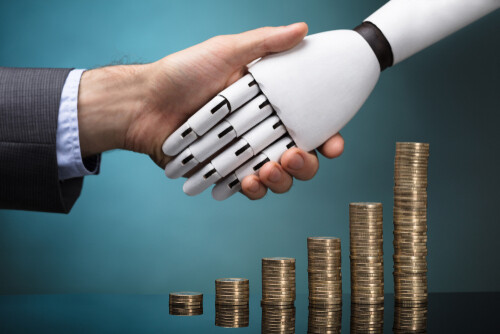The old days of banking may be long gone in just a few years and this, thanks to all the recent technological developments that we are currently witnessing. You are no longer willing to enter a bank, discuss all the things that you need to discuss with a banker and hope that you get your loan approved (especially if you know the banker or a third party guarantees for your trustworthiness.) Well, those days are long gone. Cutting-edge technology to tells the bank who is a good credit candidate and who meets the requirements more accurately. FICO was developed as one of the most reliable credit ranking systems out there. This credit ranking system was developed with the most sophisticated algorithms that were available at the time and is still widely trusted to this day. But the banking industry is still due to grow at a remarkable pace. New technologies completely changed the lending and loan management practices. But what comes next? Below we will debate the topic in depth.
Machine Learning and AI Boosting the Banking Industry’s Capabilities
People usually conflate “machine learning” and “artificial intelligence” and they oftentimes think of those as being one and the same. However, the two have clear distinctions. To broadly describe artificial intelligence, you have to think of it as a subset of computer science that replicates the human cognitive process. This capability is aided through learning, pattern recognition and problem-solving. However, machine learning is a specific application in which AI is used. Let’s take the simple example of an industry in which forms are frequently used, such as loan application. Through machine learning, computers are now able to learn them as well as what types of answers it should expect. It can also ease the tasks of processors and underwriters when it comes to reviewing different types of forms and information, thanks to visual recognition. In this case, the manual tasks of processors and underwriters are eased, allowing them to engage in higher-value activities. In the banking context, machine learning enables the personnel to focus on keeping the mortgage process on track and spend less time on document reviews and other redundant tasks. Automation allows lenders and banks to focus more on the customer experience and less on comparing data from various standardized forms. What is truly great about machine learning and AI is the fact that these technologies have the capability of learning different tasks and combining those, until very specific processes and demands are met. The most relevant example is the situation when a system is “trained” to look at two pay stubs and determine the amount the customer is paid every two weeks. The system is able afterwards to mathematically calculate the yearly compensation and compare it with the compensation on the application.
AI and Machine Learning Help Banks to Reduce the Time Spend on Mortgage Processes
For both applicants and lenders, one of the main concerns is how fast the mortgage process can be completed. In the AI and machine learning context, the necessary time for a mortgage application to be approved has decreased significantly. Not only the mortgage approval process can be easily completed but also the personal loans approval process can be handled in a matter of days. Automated tasks contribute to analyzing the forms, the staff only having to review and address possible exceptions identified by computers.
Lenders and banks are quickly discovering the cost-effectiveness of AI. With this perk offered by technology, days can be shaved off from the mortgage process. Lenders and bank institutions will be able to reduce their operational costs quite effectively while handling more applications in the same amount of time. In the end, machine learning will boost these player’s competitiveness and profitability. Another advantage offered by machine learning and AI is their ability to avoid delays and promoting staff to move forward with the mortgage and lending process by enabling them to take early action if something is not following the pre-established plan. For instance, if the system notices a large deposit on a borrower’s account, it will let the mortgage expert to whom the application is assigned to, to ask for clarifying documentation and information.
A Positive Impact on the Jobs in the Industry
Usually, when the topic of AI and machine learning comes up at the workplace, employees inevitably start worrying about their job’s security and whether or not technology can replace them. But in this case, better technologies only mean that those redundant tasks will be eliminated from employees’ job description, being able to effectively and successfully handle only those higher-value tasks. This means that the employee or mortgage expert will be enabled to deliver better, and the consumer will be more satisfied with the services of a certain mortgage operator or lender. However, the employees in this industry will see themselves forced to learn new sets of skills. This will allow them to better fit and adapt in the new technological paradigm. In the banking industry, these capabilities will enable all players to reduce costs.
Other Advantages Offered by AI in the Lending and Loan Management Process
Reduced costs and faster loan approval processes are not the only advantages offered by AI. Below is a list of several other benefits that technology offers all players in this particular sector.
- Reduced credit loss;
- Decreased agency recourse risk;
- Less servicing costs;
- Lower due-diligence costs;
- Higher orientation revenue;
- Better risk-adjustment margins;
- Fewer losses from fraud;
- Reduced write-offs.
Final Thoughts
The consumer lending industry is surely guided and dictated by AI and machine learning. The way in which these modify the way in which various tasks are handled and the higher accuracy rates provided by these technologies are certainly due to modify the mortgage and lending process while boosting consumer’s satisfaction rates. From cost reduction to streamlined operations, we can expect only beneficial outcomes when we think of AI and the lending and loan management process.







